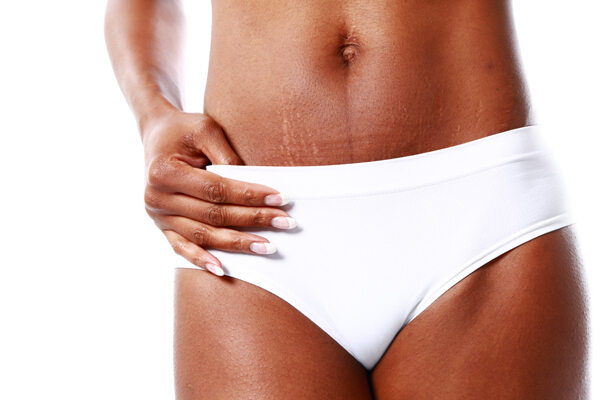Annoying Skin Issues

The most common skin issues… and how to treat them
From skin tags to stretch marks, we all have our fair share of annoying skin issues. Although they’re benign, these bothersome skin problems can make it hard to “love the skin you’re in.” Here, Alexandra Gold, PA-C from Schweiger Dermatology Group on the Upper West Side gives the scoop on some of your most vexing skin issues an how to treat them.
How to Treat Stretch Marks
Stretch marks (striae) represent thinning or stretching of the skin that can happen after periods of rapid growth, weight loss or gain, hormonal changes, or steroid use (topical or oral). They can be red or white in color and generally appear on the abdomen, thighs, breasts, and buttocks. Although difficult to fix, stretch mark treatment options include: Topical retinoids, glycolic acid (Clear Me pads or glycolic chemical peels), microneedling, or laser (Pulsed Dye Laser or Fraxel are two common lasers that can be used).
How to Treat Ingrown Hairs
After shaving close to the skin, curly hairs sometimes then grow in the opposite direction, or “inwards,” hence, ingrown hair. Once the hair grows inside, it causes a reaction in the skin causing a pimple-like bump called a pustule to appear. The best way to prevent and treat this condition is to stop shaving. Laser hair removal can permanently reduce the amount of hair in an area and therefore prevent this condition.
If discontinuing shaving or laser hair removal are not options there are other ways to try and prevent this condition. First, make sure the skin is rinsed with warm water prior to shaving. Second, use a razor with less blades and shave in the same direction as hair growth. If using an electric razor, use a higher setting to avoid shaving too close to the skin surface. Third, use a shaving gel, such as Aveeno therapeutic shave gel, and an aftershave for the beard/neck.
There are several topical treatments that can also be used to decrease inflammation and bacteria on the skin: azelaic acid (finacea), clindamycin, benzoyl peroxide, and hydrocortisone. These can be prescribed by your provider and should only be used as directed.
In the case of a single, stubborn, ingrown hair, see your dermatology provider who can try and extract the hair medically and inject a tiny amount of dilute steroid to calm it down.
How to Treat Skin Tags
Skin tags are common, benign (not dangerous), growths on the skin. They are usually flesh-colored or brown and are commonly found in areas of folds, such as: eyelids, neck, axilla (arm pit), and inguinal areas (folds of the groin). They can be itchy at times, but usually do not have any symptoms, unless irritated by friction, clothing or jewelry. Both men and women can be affected by this condition. They may be associated with a familial tendency, older age, pregnancy and weight gain. Most of the time, your dermatology provider can diagnose these lesions clinically by their appearance and location, but a skin biopsy can also prove the diagnosis.
Skin tags that do not have any symptoms do not need to be treated at all! Most patients prefer removal for cosmetic reasons. The options for treatment include: snipping them, shaving them flat, cryotherapy (freezing), or electrodessication (burning). All of the treatments are nearly painless since topical or injectable numbing is generally used. It is a quick in-office procedure that can be done on a lunch break!
How to Treat Dermatosis Papulosa Nigra
This is another type of common, benign skin growth. DPN are small, brown papules that are most often seen on the neck and cheeks in patients with darker skin types (III-VI). They are usually asymptomatic and can be treated cosmetically. These lesions may be difficult to treat, due to the risk of hyperpigmentation (darker pigment/color) from the procedure itself. Most often, I treat these types of lesions with light electrodessication and with appropriate post-care, patients do very well and are happy with the results.
How to treat Keratosis Pilaris
Do you have small, red, bumps on the backs of your arms or thighs? Then you are one of many! Keratosis Pilaris (aka “chickenskin”) is a very common, benign skin condition that affects so many people! Often times, it starts in childhood or adolescence and is more common in those with a history of eczema. It can also run in families. Though it is usually without symptoms, some people complain of itchiness or dryness. Most commonly, it presents on the backs of the arms and thighs, though some people experience this on the cheeks and buttocks. It is caused by keratin getting clogged in hair follicles, so treatment aims to unclog these pores.
There are several different ways to treat this condition. It is difficult to treat, so sometimes it may take a trial of a few different things to find what is right for each patient. I usually recommend SDG clear me pads which contain a combination of glycolic acid and salicylic acid, to chemically exfoliate the skin. The pads can be used nightly before bed. If that fails, I like to try chemical peels in the office. Other options for treatment include prescription tazarotene cream (a topical retinoid) used several nights a week or over-the-counter Amlactin cream used nightly.
